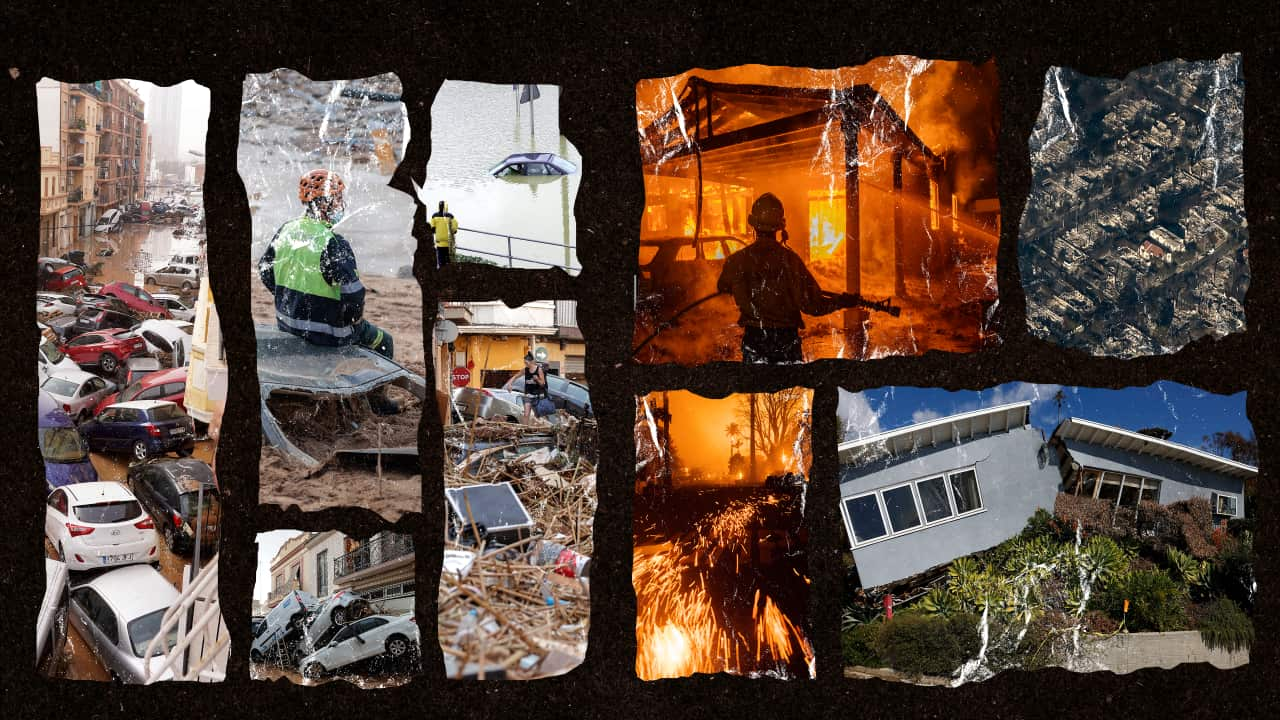Key Points
- Wildfires that broke out in South Korea days ago continue to ravage the country's south-east.
- At least 27 people have been killed and 37,000 have been forced to flee.
- South Korea's acting president Han Duck-soo says the fires are the 'most devastating' in the country's history.
Wind-driven wildfires in South Korea are now the largest and deadliest on record, having burned more forest and killed more people than any previous blaze, officials said Thursday, as the death toll hit 27.
More than a dozen fires broke out over the weekend, scorching wide swathes of the southeast and forcing around 37,000 people to flee, with the fire cutting off roads and downing communications lines as residents escaped in panic.
South Korea's Ministry of Interior and Safety said that 27 people had been killed and dozens more injured, with the toll likely to rise. It is the highest number of deaths since the Korea Forest Service started records for wildfires in 1987.
Many of those killed were residents — in particular the elderly.
The death toll also included a pilot who died after a helicopter crashed on Wednesday during efforts to contain wildfires in the southeastern town of Uiseong, one of the areas hardest hit.
The aircraft had no other crew members.
The National Fire Agency said at least 26 other people sustained varying degrees of injuries.

Multiple blazes have caused "unprecedented damage", South Korea's acting president has said. Source: AFP / Yasuyoshi Chiba
The extent of damage makes it South Korea's largest ever wildfire, after an inferno in April 2000 that scorched 23,913 hectares across the east coast.
In a televised address, South Korea's acting president Han Duck-soo said the wildfires that began on Friday were causing worse damage than many other past wildfires.
"Damages are snowballing," Han said.
"There are concerns that we'll have wildfire damages that we've never experienced, so we have to concentrate all our capabilities to put out the wildfires in the rest of this week."
Authorities said changing wind patterns and dry weather had revealed the limitations of conventional firefighting methods.

More than 27,000 people were forced to evacuate due to the wildfires. Source: AFP / Yasuyoshi Chiba
Observers say the ongoing wildfires are the third biggest in South Korea in terms of land burned.
Han has described them as South Korea's "most devastating". They are the country's deadliest.
Officials in several southeastern cities and towns had ordered residents to leave on Tuesday as firefighters struggled to contain multiple blazes fuelled by dry winds.
The largest fires were in Andong, the neighbouring counties of Uiseong and Sancheong, and the city of Ulsan, according to the interior ministry.
Earlier on Tuesday, officials had said firefighters had extinguished most of the flames from the largest wildfires in those areas, but wind and dry conditions allowed the blazes to spread again.
But efforts to fight the fires were partially suspended overnight as the winds strengthened.
The blaze in Uiseong destroyed nearly half of more than 30 structures at Gounsa, a temple that was said to be originally built in the seventh century.

Most of the buildings at Gounsa Temple in Uiseong were burned to the ground during the wildfire outbreaks. Source: AFP / Yasuyoshi Chiba
The temple's other state-designated "treasure", a stone Buddha statue reportedly manufactured in the eighth century, was moved to a safe place, according to government and Buddhist officials.

A firefighter extinguishing the remaining flames after most of the buildings were burned to the ground in a wildfire at Gounsa Temple in Uiseong. Source: AFP / Yasuyoshi Chiba
The 18 dead include four firefighters and government workers who were killed in Sancheong on Saturday after being trapped by fast-moving flames driven by strong winds, according to officials.
Government officials suspect human error caused several of the fires, possibly due to the use of fire while clearing overgrown grass in family tombs or sparks from welding work.


